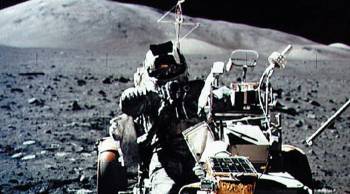
6 everyday inventions that were born from space tech
6 everyday inventions that were born from space tech

The National Aeronautics and Space Administration specializes in outer space and beyond. But a lot of its work way out there trickles back down to Earth and into the lives of everyday people.
That’s because the government mandates that NASA pass on its work to the tax-paying public. The NASA Spinoff program is the division of scientists and engineers who take the technology NASA invents and figures out how it can be applied to terrestrial life. President Dwight D. Eisenhower, who established NASA, thought the technology being developed for space travel should be repurposed for regular life.
Daniel Lockney, executive of NASA’s Technology Transfer Program, admits that this is kind of a backward way to problem-solve.
“You don’t need to build a spaceship before you build an implantable heart device,” Lockney said. “On the other hand, because we are tackling these challenges and doing things that have never been done, it is a moral imperative that we reuse.” There are, of course, some inventions that NASA does not sell, like sensitive guidance and navigation software and alien technology.
Here are a few things that exist in your life because of space technology:
“Invisible” braces
“Invisible” braces started in an unlikely place: Scientists were trying to figure out a way to track heat-seeking missiles and during development created a transparent poly-crystalline alumina for production. The component is stronger than steel, yet smooth and clear — perfect for something as delicate as the inside of your mouth.

Baby formula nutrient
While developing food for missions to Mars, researches discovered how to make an omega-3 fatty acid, a key nutrient found in breast milk. NASA said this ingredient is in 90 percent of infant formulas on the market. It’s also added to other milk products and vitamin supplements.

Emergency blankets
NASA developed these shiny blankets in 1964 for space emergency kits. They’ve become popular post-marathon blankets. The technology has also been used by makers of outdoor clothing and sleeping bags to help keep campers and hikers warm.

Memory foam
What started as an effort to keep pilots safe during flights turned into a product that’s found in mattresses, couches and movie theater seats. But it’s also used in things you wear, like football helmets and shoes.

Tensile fabrics
Originally developed for spacesuits, tensile fabrics are used for architecture of all kinds: malls, airports and sport stadiums. NASA developed the technology after the incident with Apollo 1’s attempt to land on the moon. A fire broke out on board, killing three astronauts. Engineers were searching for a way to enhance nylon space suits so they’d be more durable, lightweight and noncombustible. The result was a fabric with a melting point over 650 degrees.

Shock absorbers for buildings and bridges
In 1969, we sent man to the moon. The spacecraft needed arms to support it before launch that could move quickly during takeoff. But the challenge was controlling that energy of arms that could move with such power that physics would cause it to overexert and collide back into the spacecraft. So engineers developed a shock system that controls suspended movement. Now, more than 550 buildings and bridges use the same technology — many of them in the world’s seismic centers, like San Francisco, Tokyo and Taiwan — to help absorb the shock of an earthquake.

Click on the player to hear more about the NASA spinoff program in an interview with Marketplace Tech’s Molly Wood and NASA’s Daniel Lockney.
| Asteroid mining and the new economics of outer space |
| Junk in space could have an impact on earth |
| Elon Musk on the future of space travel and exploration |
There’s a lot happening in the world. Through it all, Marketplace is here for you.
You rely on Marketplace to break down the world’s events and tell you how it affects you in a fact-based, approachable way. We rely on your financial support to keep making that possible.
Your donation today powers the independent journalism that you rely on. For just $5/month, you can help sustain Marketplace so we can keep reporting on the things that matter to you.


















